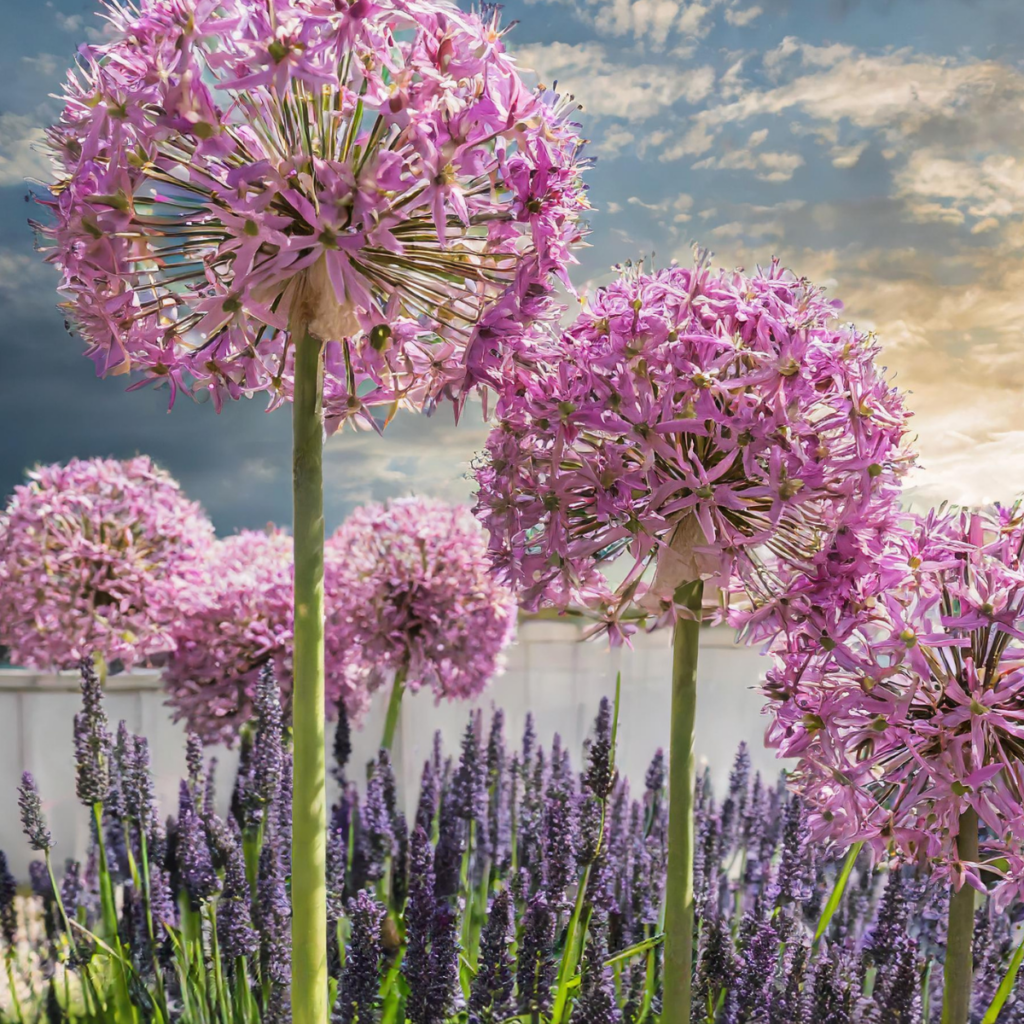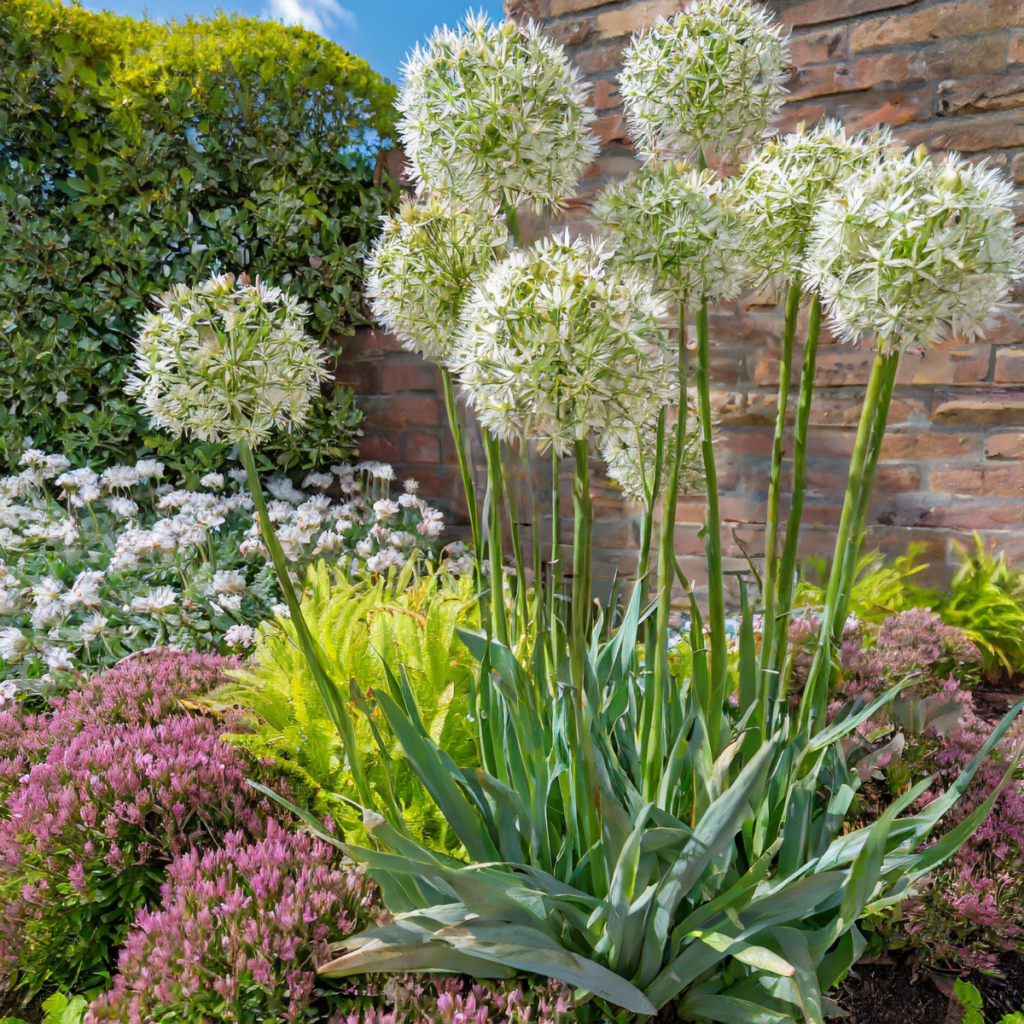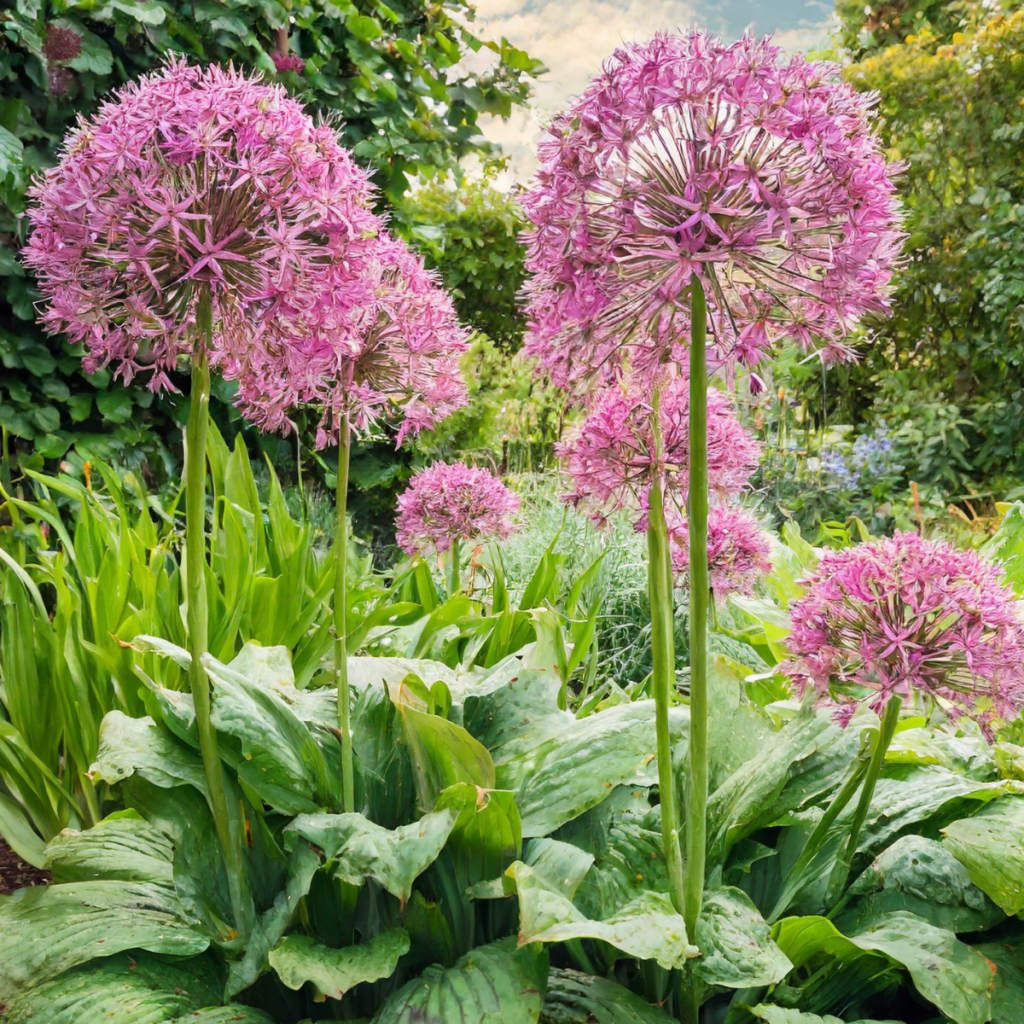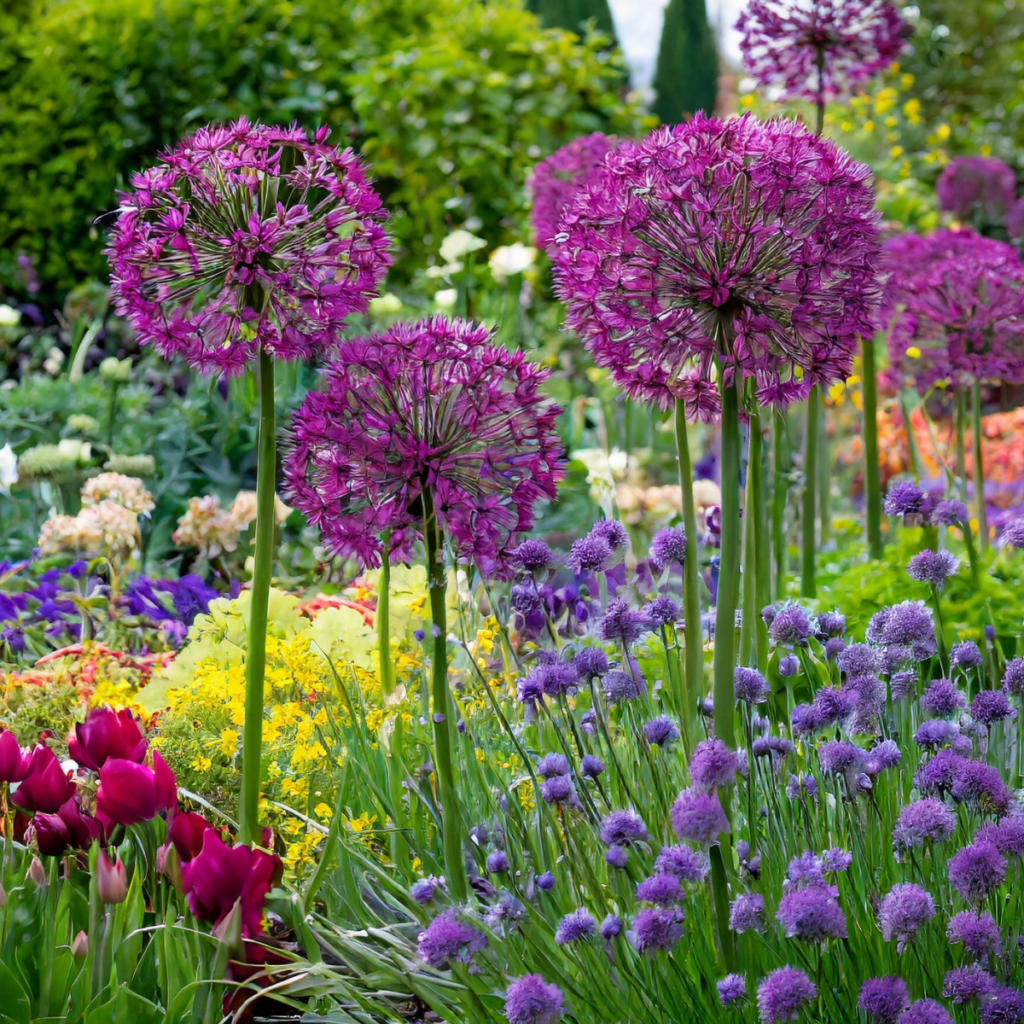Transform Your Garden with Giant Alliums: Planting Tips for Towering Blooms

This post follows our research editorial guidelines.

Giant alliums have been a special addition to my garden, their low care, long blooming and my kids absolutely LOVE them. Who would guess that this statuesque beauty, with its orbs of intricate purple florets, is a close relative of the humble onion? It’s true! These floral giants not only inject a burst of geometric color into your garden but also bring a treasure trove of benefits that cater to both green-thumbed experts and gardening novices alike. Join me as we dig into the myriad of ways these show-stopping blooms can transform your garden space.

Quickly Find Reasons To Grow Giant Alliums:
1. Discovering Its Royal Lineage
The giant allium (Allium giganteum) belongs to a family that includes kitchen staples like onions, garlic, and chives. This lineage is not just a trivial fact but the key to understanding their hardiness and minimal care requirements. Their familiar relatives provide them with a natural defense system against pests, making them as robust as they are beautiful.
2. Stature Worth Celebrating
One of the most striking features of the giant allium is its size. With blooms that can reach up to six inches across atop stalks as tall as four feet, these plants make a dramatic statement. When planting, consider their height and how they can be used to draw the eye upwards or to add depth when placed at the back of a garden bed.
3. A Magnet for Eyes and Pollinators
Each spherical bloom of the giant allium is made up of dozens of tiny star-shaped flowers that create a dense globe. These vibrant purple blooms are not only visually stunning but also a haven for bees and butterflies. Planting giant alliums is a fantastic way to support your local pollinators, providing them with ample nectar and a safe habitat.

4. The Gift of Grit Against Pests
As much as I appreciate wildlife, keeping my plants safe from nibbling intruders is always a concern. Thankfully, giant alliums are naturally resistant to deer and rodents, thanks to their onion-like scent, which repels unwanted visitors. This makes them an excellent choice for borders or areas where other plants might suffer. Rather than planting garlic to keep pests away, try adding some giant alliums into your garden plans instead.
5. Ease of Care
I always look for bulbs to grow that are low care and look great, Giant Alliums check both boxes for me . They thrive in full sunlight and well-drained soil, and once established, they require little water. This resilience allows them to flourish even in drier conditions, making them a perfect set-it-and-forget-it option for busy gardeners.

6. Long-Lasting Blooms
The longevity of their blooms is another remarkable aspect. Lasting up to three weeks, their flowers maintain a bold and beautiful appearance throughout their bloom time. Even after the petals fade, the architectural beauty of their seed heads continues to enchant, adding winter interest to the garden with their stark, skeletal forms.
7. Ideal for Floral Displays
If you love bringing cut flowers indoors for floral arrangements, giant alliums are a superb choice. Their tall, sturdy stalks and large heads make dramatic additions to any bouquet. They bring height and structure to floral displays and wont droop over after a few days sitting in water.

8. Natural Proliferation
Over the years, I have watched my giant alliums not only return each spring but also multiply. This generous self-propagation means that from a few initial bulbs, you’ll soon have a thriving colony of these stately blooms, offering more impact each year with minimal effort. While the bulbs may be a bit more expensive than a pack of tulips (Typically 1 bulb per pack) the self-propagating helps relieve that initial expense.
9. Architectural Winter Interest
The appeal of giant alliums extends well beyond their blooming season. Their dried seed heads remain visually appealing through fall and into winter, providing texture and interest amidst less colorful landscapes. These remnants are particularly striking against a snowy backdrop.

10. Versatility in Landscaping
In my garden designs, I frequently use giant alliums to add height and drama. They are excellent for the back of border gardens and can be dramatic focal points when grouped in clusters. Their unique form pairs beautifully with softer, bushier plants, creating a diverse and dynamic garden texture.
Final Thoughts
Whether you’re looking to add architectural interest, support pollinators, or simply enjoy their dramatic blooms, giant alliums are a worthwhile addition to any garden. Give them a try; you won’t be disappointed, and soon, you’ll see these graceful giants as a warm welcome to spring flowers.


Before you go!
11 Flowering Plants for a Small Beautiful Balcony
12 Different Flowers That Look Like Daisies
Growing Chocolate Cosmos: A Sweet Journey in Your Garden
11 Full-Sun Flowering Ground Covers That Will Creep Across Your Garden